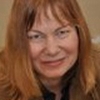Attention is a scarce resource—and that means it's a costly one. In a world of hundreds of competing voices, art and music have become a powerful way to bring a brand back into the spotlight. The perfect example? The "marriage" of Alicia Keys and Blackberry.
Blackberry didn't just bring Keys in as a spokesperson, either; it made her its creative director. That wasn't just some made-up title to give the "Girl on Fire" credibility; Keys has brought in some stellar ideas to create user (and fan) engagement.
For her first act, Keys shot videos in every location of her tour, and she invited local fans and residents of those locales to send their own photos to include in the video clips. Photos chosen went on Alicia Keys' on-stage video projection.
Now that is a huge win around user experience—one of the fastest ways to turn engagement into ROI.
Make It Relevant
Right now, consumer brands are marketing more and more with music and entertainment. In fact, it's become so important that some major brands have started their own record labels—including Red Bull, Scion, Mountain Dew, and Converse.
Why? Music is a powerful way to create a cultural connection and engage with an audience while drawing your product even closer to your demographic's lifestyle.
Being hip, cool, relevant, and present as a brand is important, but the more important issue can be the cost to your image if you resist popular trends. (Just one example: Levi's missed the hip-hop boom, and it cost the company $1 billion in sales—in one year.)
Tuning in isn't just a smart way to connect with your audience; it can be vital to your brand's survival.
The New 'A&R'
Brands are becoming a trusted source for breaking hip underground artists to the mainstream media. The iTunes team at Apple (my alma mater) chose specific, obscure artists to create buzz around the launch of iTunes.
That curating practice was really a form of Artist and Repertoire (or A&R), which used to be the domain of a record company. An "A&R" role—which I once did for EMI Music prior to launching the music vertical at Apple—was responsible for cultivating new talent for a label. Now, brands are performing that role themselves.
By partnering with artists who fit your audience, you can create the perfect exposure for your brand to the right people. Here are a few ways to start:
- Find the right sound. If you don't know which artists may make sense for your brand, hire people who do, or spend time online and on social media networks researching what your audience is listening to. Just ask and explore; they'll tell you which artists you'll want to pursue further.
- Target your age group. Brands vying for the attention of younger audiences—especially those 13-25—must be tuned into the entertainment world, especially when tie-ins between brands and bands are core to success. By partnering with exactly the right artistic act, you'll net far more attention—and credibility—with your target audience.
- Get in touch. Many brands are approaching artists directly. If the artist is signed, the label may be involved, but it's best to start with the artist's manager (if an established band) or the artist directly (when a rising indie artist).
- Go where your audience is. Music festivals create the perfect audience for a brand. You'll place yourself in front of thousands of viewers and kindle a shared passion with your artists' fans. There are lots of music festivals catering to diverse audiences; find your niche.
- Unify and balance. Merging the needs of artists, brands, and fans can create powerful results. When an artist has a song that ties into the theme of a brand campaign, it resonates with the audience and is doubly powerful.
Behind the Music
There's nothing quite like a smart, well-executed match between a brand and an artist. When Rihanna debuted her clothing line for River Island during London Fashion Week, she helped generate buzz and boost awareness in the United States around the UK-based clothing brand.
When Panic at the Disco partnered with Honda Civic for the Honda Civic Tour in 2008, the group created an original, exclusive song for Honda's Civic commercial. The band reached a much broader audience, which resulted in higher CD and ticket sales, and Honda was on the cutting edge with a new kind of branded content.
Apple's commercial for the launch of the MacBook Air featured a soundtrack from a little-known artist, Yael Naim. "New Song," which was recorded in Naim's Paris apartment, jumped up the charts and subsequently led to a wildly popular US tour—and critical success.
Those are just a few examples; dozens of artistically interesting campaigns have benefited from the touch of a complementary musical act. That creative matchmaking is different every time, and it brings a new, fresh twist to a brand's perception.
The reason is simple: By its nature, music is both emotional and powerful. That's why fans gather around their favorite artists, creating strong, tightly knit subcultures. Tuning into those communities can be the difference between becoming "white noise" and making a truly engaged connection—and that's every advertising campaign's goal.




